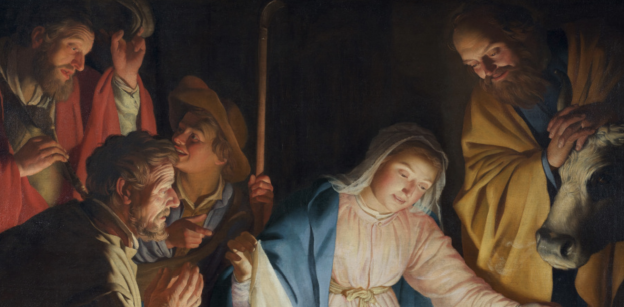Read Exodus 36 and John 1:14-18
Did you know that the Parliament Buildings in Central Wellington are not the original? The complex has been built piecemeal over the years. The original, wooden structure was built for the Wellington Province before Parliament moved from Auckland to Wellington in 1865. It burnt down in a fire and was replaced with the better, more elaborate, stone structure we know today… and the Beehive.
In Exodus 36 the Israelites built the tabernacle, the tent-like structure which was God’s dwelling-place with his people. Eventually Solomon would replace this tabernacle with a more permanent structure (1 Kings 7), made of stone. That temple survived for several hundred years, before it was destroyed when the Babylonians conquered Judah. But even then, God’s glory had departed from the temple before that point (Ezekiel 10).
After the exile, Ezra organised the rebuilding of the temple, helped by the encouragement of Haggai and Zechariah. That rebuilt temple, which was a shadow of the previous temple’s glory (Ezra 3:12), was progressively rebuilt by the rulers of the land as a way to gain favour with the Jews (and perhaps, for the more religious, with their God).
Yet that temple was still just a building, just as the tabernacle was just a tent beforehand. The sacrifices performed at the temple repeated day by day, because they did not definitively deal with the problem of sin. They, and the temple, pointed forward to something greater, the true tabernacling of God with man to make one final effective sacrifice.
John’s Gospel does not begin with an account of Jesus’ birth, but with a prologue which introduces Jesus as the promised Christ because of who he is: the eternal God who became a man so that he could save us from our sins.
After identifying Jesus as the eternal Word who was with God and who himself was God, and who made all things, John’s Gospel situates Jesus in history by pointing to the ministry of John the Baptist, the final “Old Testament” prophet sent by God (even if we find him in the beginning of the New Testament).
But how does Jesus relate to the temple? John gives us an answer in verse fourteen. “And the Word became flesh and dwelt among us, and we have seen his glory, glory as of the only Son from the Father, full of grace and truth”.
The Divine Word took to himself a human body just like us, and dwelt among us. Literally, he “tabernacled” with us, just as God tabernacled with Israel in the wilderness, and his presence dwelt in Solomon’s temple. In the person of Jesus, we come face to face with God’s glory in a way which never before had been experienced, and to an audience far broader than the one High Priest whose job it was to enter the Most Holy Place once a year.
It is through Jesus, the Word made flesh, the true dwelling-place of God with us, that we receive “grace upon grace” (v.16). God gave Moses the Law which reveals our sin, but only Jesus fulfils the promises of forgiveness and grace given alongside the Law (and to the Israelites’ Fathers many years before) at Sinai (v.17).
Moses was not able to come face to face with God. He could only gaze upon the shadow of God’s glory as God passed before him, proclaiming and revealing his perfections (Exodus 34). Nobody has seen God, but Jesus reveals God to us in his person, his work, and his being (v.18).
When we gather together with each other and with family at Christmas, we are not just sharing presents, company, food, and fellowship. We are remembering that the little baby born in a manger was the true and greater revelation of God to us.
We remember that Jesus is the better temple. Where the tabernacle was layers of beautiful fabric, and the temples were made of timber and stone, the better temple was made of beautiful flesh and blood. In that temple, Jesus our Immanuel was God pleased to dwell with his people.
That better temple succeeded where the others before fell short. Jesus was not born in a manger so we could have Christmas trees, candy canes, and gifts. Jesus was born to die. To live a perfect life, and to lay it down as a perfect sacrifice, then take it up again to prove that God accepted it as a once for all sacrifice.
The tabernacle and temple were “restricted” grounds, where special passes because of your status were required. Even then, only the High Priest was allowed into the most restricted parts of the grounds. But Jesus’ sacrifice opened the way for us all to enter into God’s presence. Not just as servants (though we are that), but as “children of God” (v.12), born of God (v.13).
That little baby, a miraculous birth, was the fulfilment of all of God’s promises from Adam and Eve in the Garden onwards. Jesus is the substance that the tabernacle looked forward to. Our God, our Saviour, dwelling with us.
Merry Christmas.


